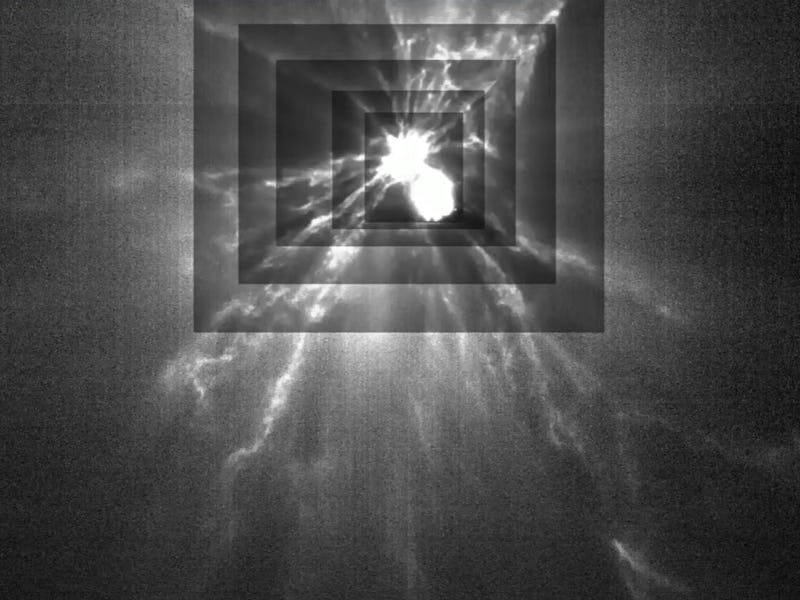See the debris streaming from spacecraft-damaged asteroid — 7 million miles from Earth
Witness the power of a spacecraft smacking into an asteroid.

A plume of debris: The telltale sign of impact was launched into space when NASA struck an asteroid two weeks ago. The material, carried away from the asteroid by the wind of charged particles the Sun emanates throughout our Solar System, could reveal critical information about how NASA’s spacecraft affected the asteroid — and whether it is a viable blueprint for a future planetary defense mission.
On the scene to document the collision was ASI’s LICIACube, or Light Italian Cubesat for Imaging of Asteroids — and NASA and the European Space Agency have shared the reconnaissance for us all to see.
What happened to Dimorphos?
The target of NASA’s Double Asteroid Redirection Test (DART) was the small rock Dimorphos. Its orbit around a larger asteroid, Didymos, is now 32 minutes shorter than before DART’s impact, according to a NASA announcement on Tuesday. To highlight its incredible achievement, NASA and its partners — Johns Hopkins Applied Physics Laboratory and the Italian Space Agency — released mesmerizing footage of the landmark event.
DART smacked into Dimorphos to test how an approach called “kinetic impact” could one day offer humanity a way to save planet Earth should a large asteroid fly toward us on a collision course.
Rather than blow up the perilous asteroid, which could litter space with unpredictable rocks, NASA’s Planetary Defense Office has elected to nudge asteroids away instead. And on Tuesday, DART officials announced that the ejecta might have played a role in how Dimorphos’ orbit has changed.
This image shows the ejecta streaming from the asteroid after the impact on September 26:
ASI’s LICIACube took this image. It shows the plumes of ejecta streaming from asteroid Dimorphos after NASA’s DART spacecraft impacted it on September 26, 2022.
To better see the fine structure in the plumes, the rectangles in the above image are included to represent a different level of contrast.
“It was a unique opportunity to be the reporter for the event,” ASI president Giorgio Saccocia said Tuesday of LICIACube’s role in DART. LICIACube detached from DART about two weeks before impact and caught the fateful moments before and after the spacecraft obliterated itself upon Dimorphos’ rocky surface.
DART’s coordination lead Nancy Chabot and program scientist Thomas Statler told reporters on Tuesday that current data suggest the recoil from the ejecta that blasted off Dimorphos was a “substantial contributor” to the overall push the asteroid experienced.
This gif shows the moments just after NASA’s DART craft hit Dimorphos as the LICIACube sweeps by the rock:
This movie uses images from the LUKE camera on ASI’s LICIACube. LUKE took this imagery just after NASA’s DART spacecraft impacted asteroid Dimorphos on September 26, 2022. The video begins with LICIACube around 500 miles away from the asteroid. It then passes by and continues to around 200 miles away.
Didymos (top) Dimorphos (bottom), and the plume coming off of Dimorphos after DART impact are clearly visible in this LICIACube image.
What’s next — With the footage in hand, DART’s team will compare the observed ejecta properties to the results of their simulators, seeing if they can virtually recreate the impact’s qualities and ascertain the physics behind what happened.
“All of this information plays into our understanding of what really happened in the experiment,” Statler said. “How effectively did the kinetic impact change the motion of the asteroid? How efficiently was momentum transferred? It’s too soon to say. There’s a lot of moving parts in this calculation.”
The European Space Agency plans to launch a follow-up mission called HERA in October 2024. It aims to reach the asteroid pair in December 2026 to study DART’s effect up close.